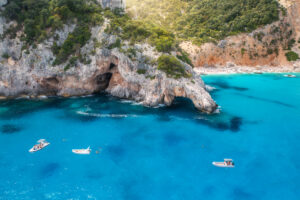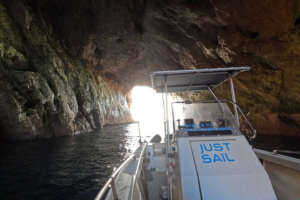Sardinia, the second-largest island in the Mediterranean, is a treasure trove of natural beauty, cultural richness, and culinary delights. Located off the western coast of Italy, this island offers an alluring blend of pristine beaches, rugged landscapes, and a deep historical heritage.
6 Reasons Why Sardinia is Worth Visiting
- Stunning Beaches
- Sardinia is home to some of the most beautiful beaches in the Mediterranean, including La Pelosa, Costa Smeralda, and Cala Brandinchi, known for their pristine sands and crystal-clear waters.
- Rich History and Archaeology
- The island boasts numerous ancient sites, such as the Nuragic complexes like Su Nuraxi and Roman ruins, offering a deep dive into its historical and archaeological heritage.
- Unique Culinary Experiences
- Sardinian cuisine features distinctive dishes like Su Porceddu (roast suckling pig), Malloreddus (Sardinian gnocchi), and unique flavors like miele di corbezzolo (bitter honey) and local wines such as Cannonau.
- Scenic Landscapes
- Sardinia’s diverse landscapes range from rugged mountains and lush forests to dramatic cliffs, providing ample opportunities for hiking, birdwatching, and kayaking along the stunning coastlines.
- Cultural Festivals
- The island hosts vibrant festivals like the Sant’Efisio Festival and unique cultural events in Mamoiada and Nuoro, showcasing traditional Sardinian music, dance, and crafts.
- Warm Hospitality
- Sardinians are known for their hospitality and deep sense of community, offering visitors a welcoming and immersive experience into the island’s traditions and daily life.
Let’s discover more about every reason why Sardinia is worth visiting.
Popular Beaches and Destinations
La Pelosa


Located near the town of Stintino in the northwest, La Pelosa is often regarded as one of the most beautiful beaches in Italy. Its shallow, turquoise waters and fine white sand make it a popular choice for families and photographers alike. The beach is framed by the ancient watchtower, Torre della Pelosa, adding a historical touch to its stunning natural beauty.
Due to its popularity, La Pelosa can get crowded, especially during the summer months, so it’s advisable to visit early in the day or during the off-season.
Costa Smeralda


Costa Smeralda, or the Emerald Coast, is one of Sardinia’s most renowned beach destinations. Located in the northern part of the island, this exclusive stretch of coastline is famous for its dazzling azure waters, luxurious resorts, and vibrant nightlife. It’s a playground for jet-setters and celebrities who flock here to enjoy the sun, sea, and upscale amenities.
The beaches in this area, such as Porto Cervo and Spiaggia del Principe, offer pristine sands and crystal-clear waters perfect for swimming, sunbathing, and water sports.
Cala Brandinchi


Often referred to as “Little Tahiti,” Cala Brandinchi is situated near the town of San Teodoro in northeastern Sardinia. This beach is famous for its clear, shallow waters and fine, golden sand. The picturesque setting, with its backdrop of pine trees and views of the island of Tavolara, makes it a favorite spot for both relaxation and water activities like snorkeling.
Cala Brandinchi’s tranquil waters are ideal for families with children, and its natural beauty makes it a must-visit for anyone exploring the island.
Villasimius


Located in the southeastern part of Sardinia, Villasimius is another gem that offers stunning beaches and a charming town atmosphere. Known for its soft white sands and clear, blue waters, Villasimius boasts several beautiful beaches, such as Simius Beach Porto Giunco and Punta Molentis.
The area’s natural beauty is complemented by its vibrant town center, where visitors can enjoy local cuisine, shop for crafts, and experience Sardinian hospitality. The nearby Capo Carbonara Marine Protected Area also offers excellent opportunities for snorkeling and diving, showcasing the rich marine life of the region.
Lesser-Known Beaches
Lesser-Known beaches are still beautifull, but less crowded. However, do not expect to be with little company in peak season (July August),
Chia Beach


Located in the southern part of Sardinia near the town of Domus de Maria, Chia Beach is a hidden gem that offers a more secluded and tranquil beach experience. Known for its rolling sand dunes and clear turquoise waters, Chia Beach is perfect for those looking to escape the crowds and enjoy a peaceful day by the sea. The beach is surrounded by beautiful landscapes, including lagoons where flamingos can often be seen. It’s an ideal spot for nature lovers and those seeking a quieter beach experience.
Genne Mari


Genne Mari is a beautiful, lesser-known beach located in the southeastern part of Sardinia, in the town of Torre delle Stelle. This beach is characterized by its fine, white sand and clear, shallow waters, making it an ideal spot for swimming and relaxing. The tranquil atmosphere and picturesque setting make Genne Mari a perfect destination for those seeking a quieter beach experience away from the more crowded tourist spots.
Beaches on the West Coast


The west coast of Sardinia is home to several lesser-known beaches that offer tranquility and stunning natural beauty. Here are a few to consider:
- Spiaggia di Is Arutas: Known for its unique quartz sand that looks like rice grains, Spiaggia di Is Arutas is located on the Sinis Peninsula. The beach’s clear waters and remote location make it a great spot for snorkeling and enjoying nature.
- Spiaggia di Mari Ermi: Also located on the Sinis Peninsula, this beach features similar quartz sand and is surrounded by wild, unspoiled landscapes. It’s perfect for those who appreciate natural beauty and a peaceful environment.
- Cala Domestica: Nestled in a cove on the southwestern coast, Cala Domestica is a picturesque beach with golden sands and clear waters. The surrounding cliffs and historical mining ruins add to its charm and provide opportunities for exploration.


Scenic Beauty
Diverse Landscapes
Rugged Mountains


Sardinia’s mountainous terrain offers a striking contrast to its coastal beauty. The Barbagia region, located in the heart of the island, is characterized by its rugged mountains and remote villages. These mountains are not only visually impressive but also rich in history and culture.
The Gennargentu mountain range, the highest in Sardinia, provides stunning vistas and is a haven for hikers and nature enthusiasts.
Lush Forests


Sardinia is home to several lush forests that provide a serene escape into nature. The island’s forests are filled with a variety of flora and fauna, offering a peaceful retreat for those looking to explore Sardinia’s natural landscapes.
The oak and cork oak forests, in particular, are noteworthy for their dense canopies and biodiversity. These forests are perfect for leisurely walks and discovering Sardinia’s unique plant life.
Dramatic Cliffs


The coastline of Sardinia is punctuated by dramatic cliffs that drop steeply into the azure sea. These cliffs offer breathtaking views and are a major attraction for adventurers and photographers.
The cliffs around Cala Gonone and the Gulf of Orosei are especially spectacular, providing panoramic views of the rugged coastline and crystal-clear waters below. These areas are ideal for exploring by foot or by boat, offering a unique perspective of Sardinia’s natural beauty.
Activities
Birdwatching in Molentargius Park


Molentargius Park, located near Cagliari, is one of Sardinia’s premier spots for birdwatching. This wetland area is home to a diverse array of bird species, including flamingos, herons, and various migratory birds. The park’s salt ponds and lagoons create a rich habitat that attracts birdwatchers from around the world. Visitors can explore the park through its network of trails and observation points, making it a must-visit for nature lovers and bird enthusiasts.
Hiking in the Barbagia Mountains


The Barbagia Mountains offer some of the best hiking trails in Sardinia. Trails vary in difficulty, making them accessible for both casual walkers and experienced hikers. Hikers can explore ancient paths that wind through remote villages, forests, and high peaks. The region is also rich in archaeological sites, including Nuragic ruins, adding a historical element to the hiking experience. The Supramonte massif, with its deep gorges and limestone plateaus, is a highlight for many outdoor enthusiasts.
Kayaking Along the Cliffs
Kayaking is a popular activity along Sardinia’s cliffs, offering a unique way to experience the island’s dramatic coastline. The clear waters and rugged rock formations create an ideal setting for kayaking. Tours often include stops at secluded beaches and caves that are only accessible by water. Kayaking along the cliffs provides not only an adventurous experience but also an opportunity to see Sardinia’s stunning landscapes from a different vantage point.
Cultural and Historical Richness
Sardinia’s cultural and historical richness is evident in its well-preserved archaeological sites, vibrant festivals, and informative museums. These attractions offer visitors a deep dive into the island’s past and present, showcasing the unique blend of influences that make Sardinia a truly special destination.
Historical Sites
Nuragic Sites (e.g., Su Nuraxi)


Sardinia is home to the ancient Nuragic civilization, which dates back to the Bronze Age. The most famous of these sites is Su Nuraxi, located near the village of Barumini. This UNESCO World Heritage site is an impressive example of Nuragic architecture, featuring a central tower (nuraghe) surrounded by a complex of additional structures. Visitors can explore the ruins and learn about the island’s prehistoric inhabitants through guided tours and informative displays.
Roman and Medieval Ruins
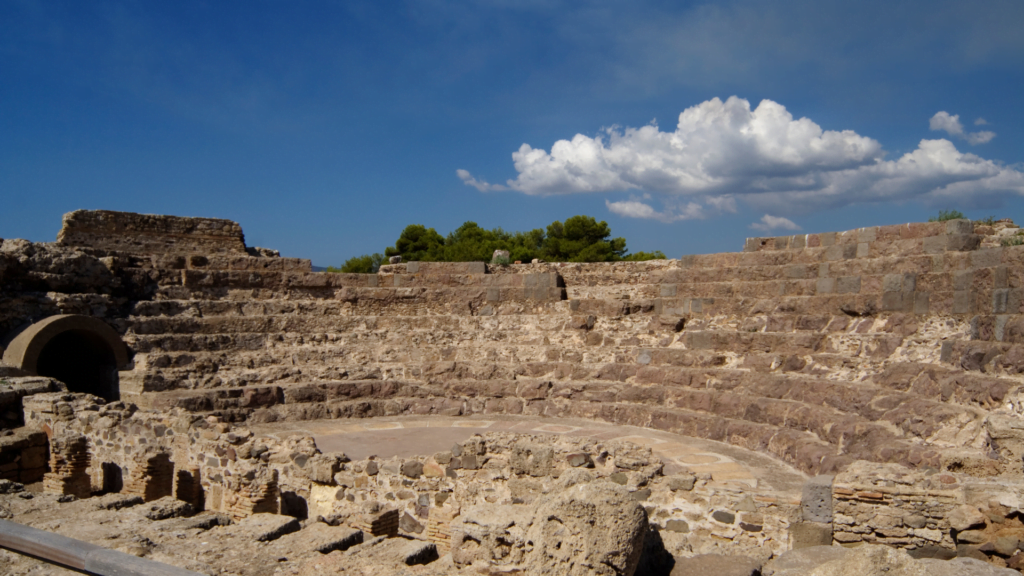

Sardinia also boasts a wealth of Roman and medieval ruins that reflect its diverse historical influences.
The ancient city of Nora, near Pula, offers a fascinating glimpse into Sardinia’s Roman past, with its well-preserved mosaics, baths, and amphitheater. In addition, the medieval quarter of Castello in Cagliari showcases a rich history with its narrow streets, ancient fortifications, and stunning views over the city. Other notable sites include the Romanesque churches of Santa Maria del Regno in Ardara and San Pietro di Sorres in Borutta.
Museums and Festivals
Sant’Efiso Festival in Cagliari


The Sant’Efiso Festival, held annually in Cagliari, is one of Sardinia’s most important and colorful events. This centuries-old festival, which takes place every May, honors Saint Efisio, the island’s patron saint. The celebration includes a grand procession with participants dressed in traditional costumes, accompanied by horse-drawn carriages and music. It’s a vibrant display of Sardinian culture and devotion, attracting thousands of visitors and locals alike.
Museum of Mediterranean Masks in Mamoiada


Located in the heart of Sardinia, the Museum of Mediterranean Masks in Mamoiada is dedicated to the island’s unique cultural heritage. The museum showcases traditional masks used in Sardinian festivals, particularly those from the Mamuthones and Issohadores, which are central to the local Carnival celebrations. These masks are not only artistic but also deeply symbolic, representing ancient rituals and traditions that have been passed down through generations.
Ethnographic Museum in Nuoro


The Ethnographic Museum in Nuoro offers an in-depth look at Sardinia’s traditional way of life. The museum’s exhibits include traditional clothing, household items, and tools used in Sardinian agriculture and crafts. It also highlights the island’s rich folklore, showcasing festivals, music, and dance. The museum provides a comprehensive understanding of Sardinian culture, making it a must-visit for anyone interested in the island’s heritage.
Local Cuisine
Sardinian cuisine is a delightful blend of flavors and traditions, reflecting the island’s unique heritage and natural bounty. From hearty roasted meats to delicate stuffed pasta and distinctive local wines and liqueurs, the culinary offerings of Sardinia provide a rich and memorable experience for any visitor.
Traditional Dishes
Su Porceddu (Roast Suckling Pig)
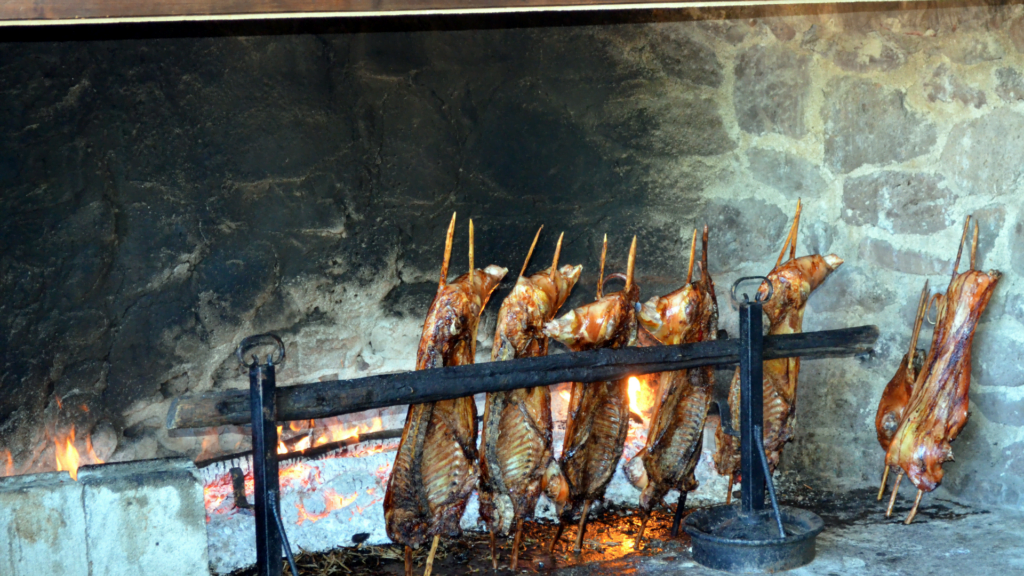

Su Porceddu is one of Sardinia’s most iconic and beloved dishes. This traditional dish features a whole suckling pig that is slow-roasted on a spit for several hours. The result is tender, flavorful meat with a crispy, golden skin. Su Porceddu is often seasoned with myrtle and rosemary, which add a distinctive aromatic flavor. This dish is typically served at festive occasions and family gatherings, reflecting its cultural importance.
Malloreddus alla Campidanese (Saffron-Flavored Pasta)


Malloreddus, also known as Sardinian gnocchi, are small, ridged pasta pieces that are traditionally flavored with saffron. Malloreddus alla Campidanese is a popular way to prepare this pasta, featuring a rich tomato sauce with ground pork, onions, and fennel seeds. The saffron adds a unique depth of flavor and a vibrant yellow color to the dish. This hearty pasta is a staple in Sardinian cuisine and is enjoyed throughout the island.
Culurgiones (Stuffed Pasta Dumplings)


Culurgiones are a type of stuffed pasta that resemble dumplings, unique to Sardinia. These dumplings are typically filled with a mixture of mashed potatoes, pecorino cheese, and mint. The filling can vary slightly depending on the region. The pasta is sealed in a distinctive plaited pattern, making them easily recognizable. Culurgiones are usually served with a simple tomato sauce and a sprinkle of grated cheese, showcasing the island’s emphasis on fresh, local ingredients.
Fregola con Arselle (Fregola with Clams)


Fregola is a type of Sardinian pasta similar to couscous, made from semolina dough that is rolled into small balls and toasted. Fregola con arselle is a classic dish combining this unique pasta with clams in a rich, savory broth made with tomatoes, garlic, and white wine. The toasted fregola adds a distinctive nutty flavor and a pleasant texture to the dish.
Seadas (Filled Pastries With Honey)


Seadas (also called Sebadas) are traditional Sardinian pastries filled with fresh pecorino cheese and lemon zest, then fried and drizzled with honey. This dessert is a delightful blend of sweet and savory flavors, with the warm, melted cheese contrasting beautifully with the sweetness of the honey. Seadas are typically enjoyed as a special treat during festivals and celebrations.
Unique Flavors
Honey Made from Strawberry Tree Flowers (Miele di Corbezzolo)


One of the unique flavors of Sardinia is honey made from the flowers of the strawberry tree (Arbutus unedo). This honey has a distinctive, slightly bitter taste that sets it apart from other types of honey. It is often used in traditional Sardinian desserts and as a sweetener for various dishes. The production of this honey is a long-standing tradition on the island, reflecting the local flora and artisanal practices.
Local Wines (Cannonau)


Sardinia is renowned for its wine, with Cannonau being one of the most famous varieties. Cannonau is a robust red wine made from the Grenache grape, known for its high alcohol content and rich, fruity flavor with notes of berries and spices. It pairs well with many traditional Sardinian dishes, particularly those involving roasted meats and hearty stews. The island’s wine culture is an integral part of its culinary identity, with numerous vineyards and wineries offering tastings and tours.
Traditional Liqueurs (Mirto, File ‘e Feru)
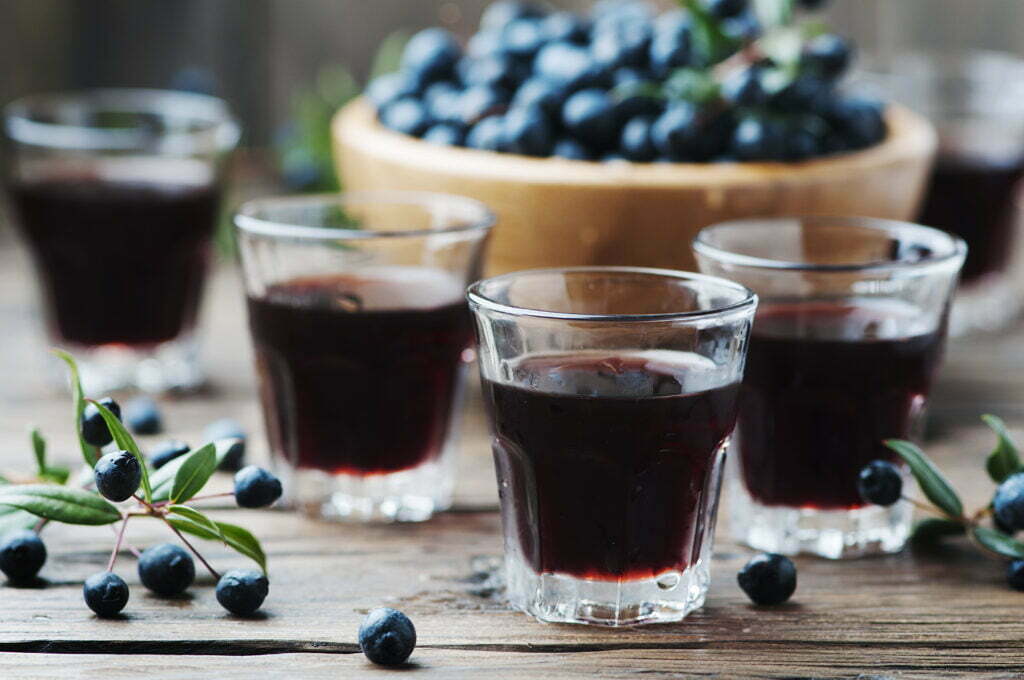

Sardinia boasts a variety of traditional liqueurs, with Mirto and File ‘e Feru being among the most popular. Mirto is made from myrtle berries and comes in two varieties: Mirto Rosso (red) and Mirto Bianco (white). The red version is sweet and aromatic, while the white version is lighter and more herbal. File ‘e Feru, also known as Filu e’ Ferru, is a type of grappa distilled from grape skins. It is potent and often enjoyed as a digestif. These liqueurs are a reflection of Sardinia’s rich natural resources and long-standing distillation traditions.
Sardinia’s Traditions


Sardinia’s rich traditions are another compelling reason to visit. These traditions are deeply rooted in the island’s history and are celebrated through various festivals, rituals, and crafts. Here are some aspects of Sardinian traditions that make the island worth visiting:
- Festivals and Celebrations: Sardinia hosts a multitude of festivals throughout the year, each with its own unique character and significance. The Sant’Efiso Festival in Cagliari, one of the island’s most important religious events, features a grand procession in traditional attire. The Carnival in Mamoiada, with its distinctive Mamuthones and Issohadores masks, showcases ancient rituals and local folklore.
- Traditional Crafts: The island is renowned for its artisanal crafts, many of which have been passed down through generations. These include intricate weaving, basket-making, and jewelry. Visitors can often see these crafts being made and purchase unique, handmade items as souvenirs.
- Music and Dance: Traditional Sardinian music and dance play a vital role in the island’s culture. The haunting sounds of the Launeddas, a traditional wind instrument, and the rhythmic patterns of Sardinian folk dances, such as the Ballu Tundu, are integral to local celebrations and festivals. These performances offer a vibrant and immersive way to experience the island’s cultural heritage.
Sardinia’s People


One of the most compelling reasons to visit Sardinia is its people. The Sardinians are known for their warmth, hospitality, and deep sense of community. This island’s inhabitants take great pride in their cultural heritage and are eager to share it with visitors. Interacting with the locals can enrich your travel experience in numerous ways:
- Hospitality: Sardinians are famously hospitable. From small family-run bed and breakfasts to local trattorias, you’ll often be treated like a guest of honor. This genuine hospitality extends to casual encounters as well, with locals frequently offering assistance, sharing stories, and providing insights into their way of life.
- Community Spirit: The sense of community is strong in Sardinia. Many towns and villages still operate with a communal spirit, where traditions are preserved, and social bonds are cherished. Participating in local events or simply spending time in village squares provides a glimpse into this close-knit way of life.
- Cultural Pride: Sardinians have a deep pride in their heritage, which is evident in their daily lives and customs. They are passionate about their traditions, whether it’s through the preservation of their unique language, Sardo, or through the continuation of age-old crafts and practices. This pride is often shared with visitors, offering a more immersive and authentic experience.
Best Times to Visit Sardinia
Avoiding Peak Season Crowds
Sardinia is a popular destination, especially during the summer months of June, July, and August when the weather is warm and sunny. However, this peak season also means crowded beaches, busy tourist spots, and higher prices for accommodation and activities. If you prefer a quieter experience, avoiding the peak season is advisable. Here are some strategies to consider:
- Visit Early or Late in the Peak Season: If you can only travel during summer, consider visiting in early June or late September. These times still offer pleasant weather but with slightly fewer crowds compared to the height of summer.
- Stay in Less Touristy Areas: Instead of the well-known tourist hotspots like Costa Smeralda, consider staying in quieter regions such as the west coast or the southern part of the island. These areas tend to be less crowded even during peak season.
Visiting During the Shoulder Season for a Quieter Experience
The shoulder seasons, which include the spring (April to June) and autumn (September to October), are often considered the best times to visit Sardinia. During these periods, you can enjoy a more relaxed and tranquil atmosphere, along with a range of other benefits:
- Pleasant Weather: The shoulder seasons typically offer mild and comfortable weather, perfect for exploring the island without the intense heat of mid-summer. Spring brings blooming flowers and lush landscapes, while autumn offers warm sea temperatures and beautiful, golden landscapes.
- Lower Prices: Accommodation and car rental prices are generally lower during the shoulder seasons. You can often find better deals and more availability, making it a more budget-friendly option.
- Less Crowded Attractions: Tourist sites, beaches, and restaurants are less crowded, allowing for a more enjoyable and intimate experience. You can explore popular attractions like the Nuragic sites, beaches, and historical towns without the long lines and packed spaces typical of peak season.
- Local Festivals and Events: Visiting during the shoulder seasons also provides opportunities to experience local festivals and cultural events. For example, the Sant’Efiso Festival in May and various harvest festivals in the autumn showcase Sardinian traditions and hospitality.




